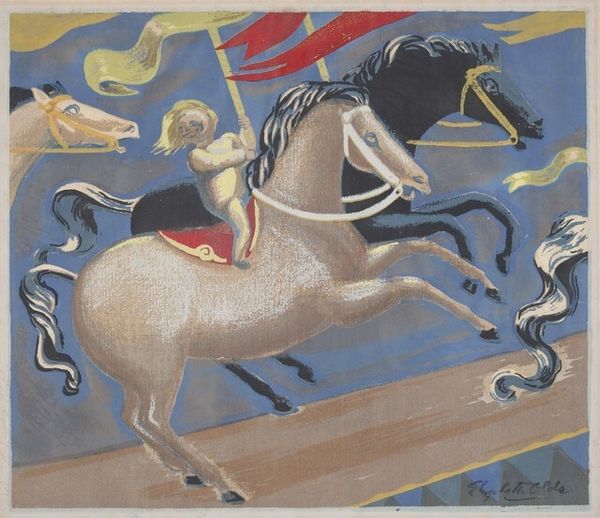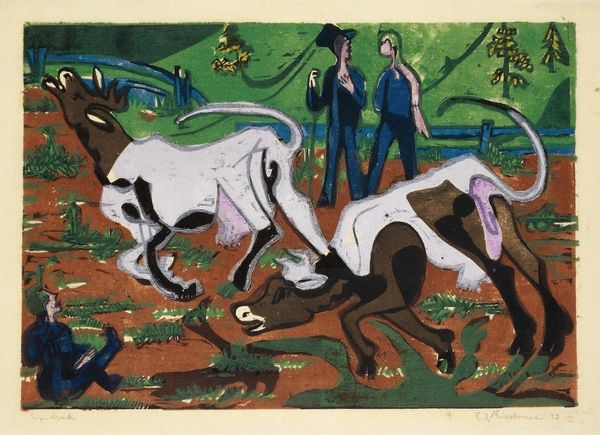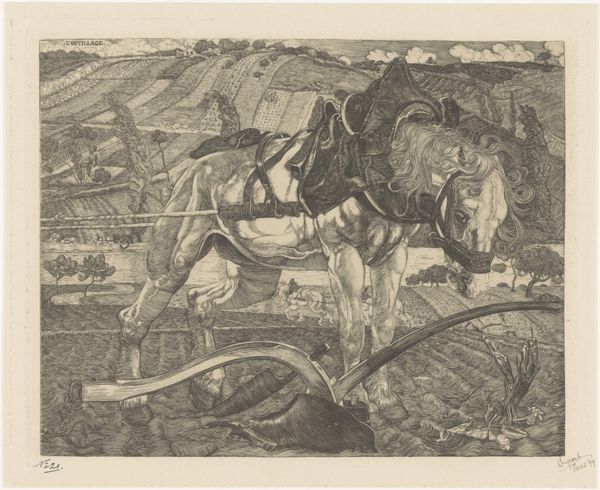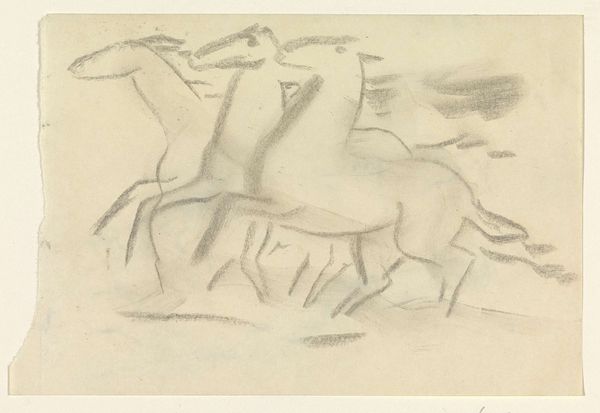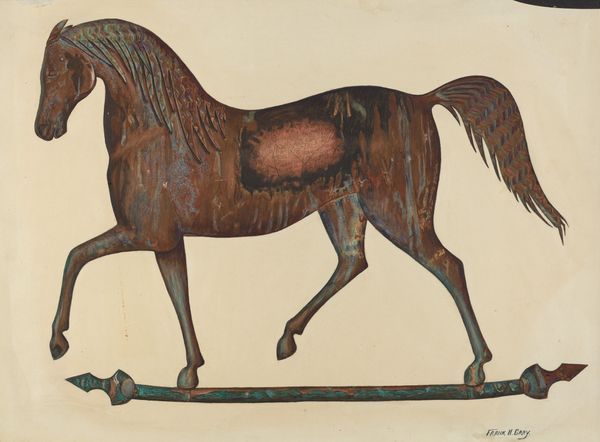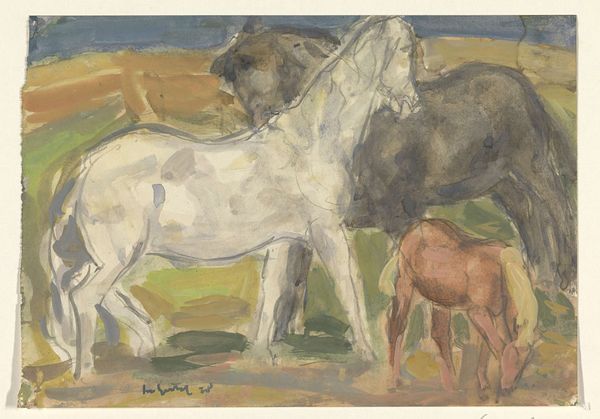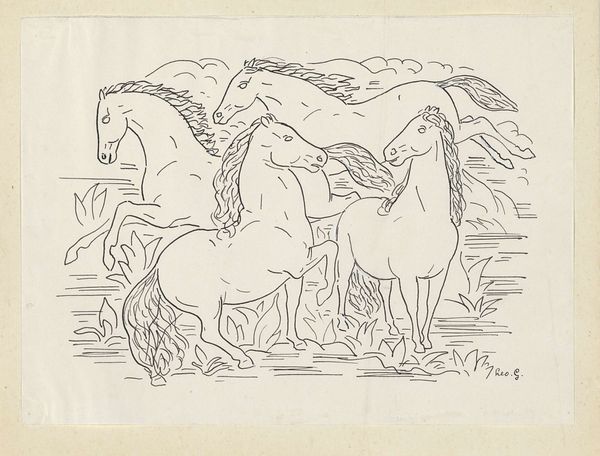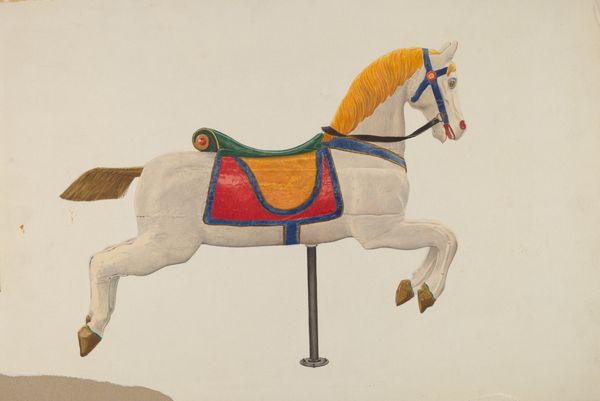
Dimensions: height 240 mm, width 324 mm
Copyright: Rijks Museum: Open Domain
Curator: Leo Gestel's "Horses in a Landscape," painted in 1928, now at the Rijksmuseum, offers a fascinating study in form and color. It is a modernist painting rendered in watercolor on paper. Editor: My first impression is one of muted dynamism. Despite the calm color palette, the horses possess a latent energy, a tension barely contained within the frame. Curator: Absolutely. Gestel, emerging from a generation grappling with rapid industrialization and social change, used the horse, traditionally a symbol of freedom and pastoral life, to perhaps subtly comment on this changing world. Were these symbols co-opted by militarization and fascism? Editor: Note how Gestel reduces the horses to simplified shapes and planes, characteristic of his exploration into cubism. The overlapping forms create a sense of depth while flattening the composition. The colors—primarily earth tones with cool blues and grays—harmonize beautifully. I want to know about this reduction of form and use of a primarily earthy and desaturated color palette. Curator: Consider, too, the cultural resonance of the landscape itself. The Netherlands, reclaimed and cultivated over centuries, held a particular symbolic weight, especially in a time of national anxiety. Did the image and symbol of the horse invoke Dutch resilience in the face of rapid change? Editor: I'm intrigued by how the loose, fluid watercolor contrasts with the angularity of the forms. There's a push-and-pull between spontaneity and control that lends a unique tension to the piece. Gestel uses transparency to his advantage. Look how he allows the colors to blend and bleed, creating soft, luminous effects. Curator: It is also difficult to look past the ways in which class intersects here. These horses represent status in an age increasingly dominated by new forms of power: was he implicitly criticizing the shift from land-based power toward new systems of production and power relations? Editor: Yes, there's definitely an argument to be made for this landscape being less about horses, more about a world in tension, articulated with elegant composition. Curator: Precisely, allowing Gestel to speak to themes of power, social transformation, and cultural anxiety. Editor: Focusing on the compositional elements helps expose those unspoken, underlying questions that run rampant beneath a seeming innocent surface. Curator: And, for me, situating Gestel's artistic decisions within his specific historical context further illuminates how artists negotiate socio-political and economic climates.
Comments
No comments
Be the first to comment and join the conversation on the ultimate creative platform.
